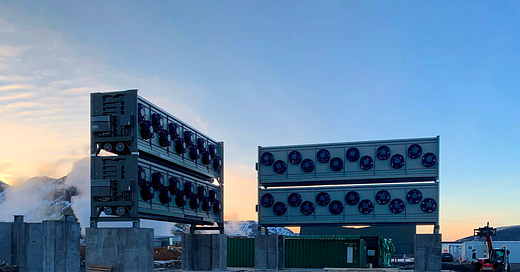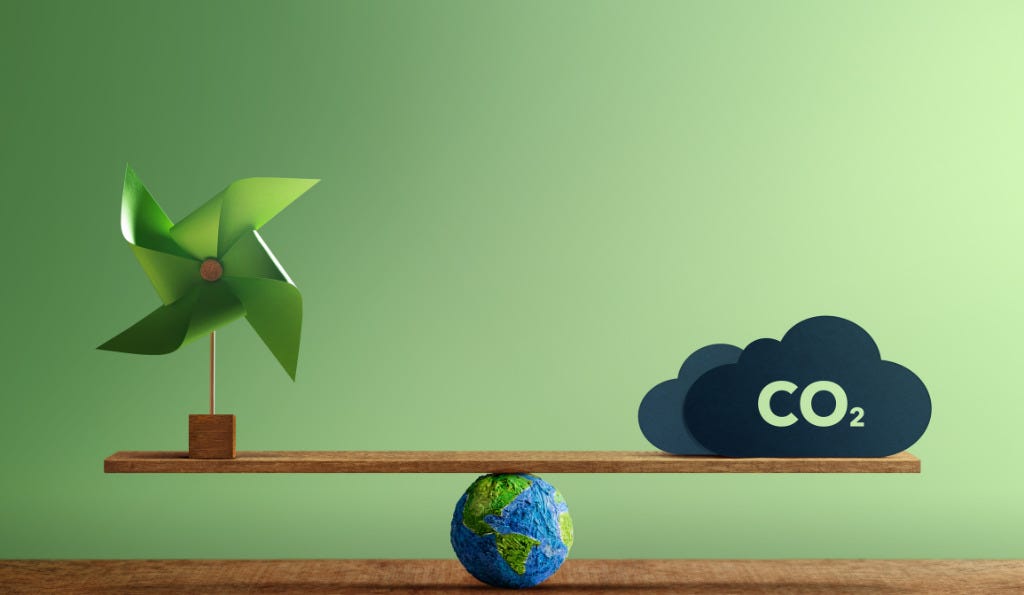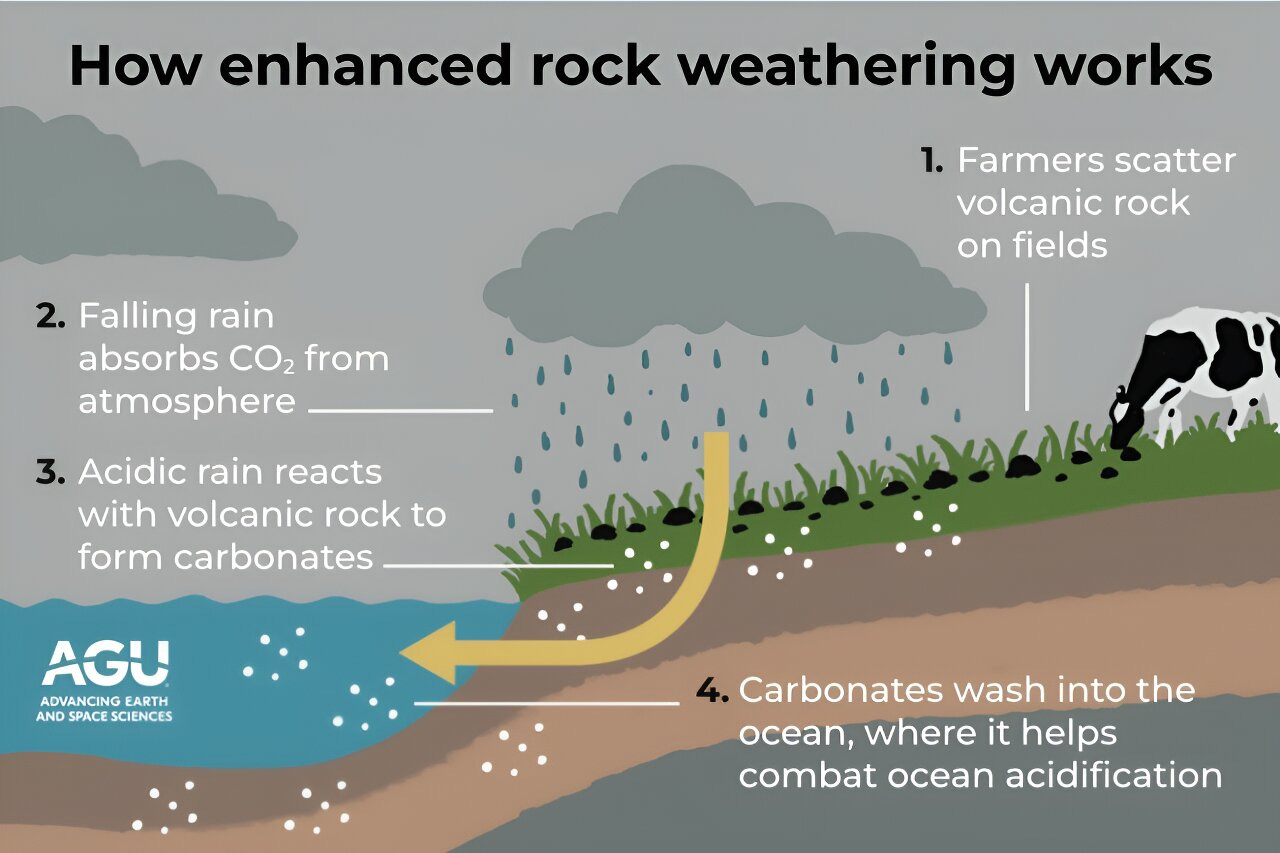Could Carbon Removal Help Us in the Fight Against Climate Change?
Exploring Carbon Removal Alternatives and their Effectiveness
As the world continues to warm and break temperature records, there is much conversation about the best way to achieve the Paris Agreement goals of limiting warming to 1.5°C and keeping global temperatures well below 2°C. One solution that is being explored is the use of geoengineering and more specifically carbon removal. This article will dive into this topic and compare different carbon removal alternatives available.
What is Geoengineering?
Geoengineering, also known as climate engineering or climate intervention, is when systems in the climate like the oceans, atmosphere, and soil are changed on a large scale to fight climate change. Some experts believe that because humans are already changing the environment, we can use geoengineering to further change it to reduce global warming. Geoengineering falls into two different categories: Carbon Dioxide Removal (CDR) and Solar Radiation Management (SRM). This article will focus on Carbon Dioxide Removal primarily.
Carbon (Dioxide) Removal aims to take the CO2 in the atmosphere and store it permanently by either modifying the carbon cycle or technological approaches. We will discuss four methods including Reforestation, Direct Air Capture and Storage (DACS), Enhanced Rock Weathering (ERW), and Bioenergy with Carbon Capture and Storage (BCCS) below.
1. Reforestation
Reforestation occurs when you take land that was used for something else and turn it into a permanent forest. Trees absorb carbon dioxide through photosynthesis and store it throughout their trunks, branches, leaves, roots, and soil, so it’s a natural way of sequestering carbon. Reforestation stands out as a nature-based solution, providing additional benefits such as enhanced biodiversity and air quality.
Despite these advantages, the market for carbon credits, often generated through reforestation projects, has come under scrutiny. A significant volume of carbon credits is traded, but concerns have been raised about the quality and efficacy of these credits. One of the critical issues is the lack of stringent controls over how long the trees must be maintained without being cut down or burned. This lack of regulation raises questions about the actual environmental benefits of some reforestation projects, as the permanence of carbon sequestration cannot be guaranteed.
Consequently, while reforestation has the potential to contribute significantly to carbon dioxide (CO2) reduction efforts, the variability in project quality and the absence of robust oversight mechanisms underscore the need for improved standards and verification processes in the carbon credit market.
2. Enhanced Rock Weathering (ERW)
Enhanced Rock Weathering (ERW) is a carbon removal technique that accelerates the natural weathering process of rocks to capture carbon dioxide from the atmosphere and store it in rock formations1. By grinding rocks like basalt and spreading the dust over large areas, the chemical reaction with CO2 effectively reduces atmospheric levels of this greenhouse gas, potentially also improving soil fertility and aiding in the fight against climate change.
Enhanced Rock Weathering presents benefits such as the potential to reduce ocean acidification, improve soil fertility, and boost crop yields without demanding additional resources, while being cost-competitive with other carbon reduction technologies. However, the method requires significant energy for rock processing and transportation, raising concerns about possible adverse ecological effects and the extensive scale needed for impactful carbon dioxide reduction. Despite these drawbacks, ERW remains a promising avenue for climate change mitigation, meriting further study and integration with broader carbon management strategies.
3. Direct Air Capture and Storage (DACS)
While the concept of Direct Air Capture and Storage has been recognized as a potential solution to climate change since the 90s, it has gained significant traction in recent years2. DACS uses technology to capture CO2 directly from the air and store it underground. By doing this, the atmospheric concentration of CO2 is reduced.
There are currently 27 DACS plants globally with the first-large scale plant located in Iceland3. The world-famous Orca plant was launched in 2021 by Climeworks and has an annual capacity of 500 tonnes of CO2 emissions per year4. Once the carbon dioxide is captured it is then mixed with water and stored underground.
One of CDR’s largest benefits is that it actually addresses the issue of too much carbon dioxide in the atmosphere by removing it permanently unlike reforestation. Nonetheless, CDR technologies are still extremely expensive compared to reforestation projects. While DACS projects remain limited, investments into this technology are growing which is providing hope to remove large amounts of CO2 from the atmosphere at scale.5
4. Bioenergy with Carbon Capture and Storage (BECCS)
Bioenergy with Carbon Capture and Storage (BECCS) combines biomass-based energy production with carbon capture technologies to remove CO2 from the atmosphere resulting in negative emissions. This process entails burning plants or organic materials (biomass), use the energy as electricity, and capture and store the CO2 emissions (in a similar way to DACS).
This approach can produce energy while capturing and storing carbon, but faces challenges such as high costs, ranging from $60 to $250 per ton of CO26, and the need for significant energy for the capture process. Additionally, large-scale implementation could impact food security, displace communities, and threaten biodiversity due to land use changes.
Final thoughts
In the face of rising global temperatures, discussions are intensifying around the best methods to achieve the Paris Agreement's goals of limiting warming. Central to these discussions is the deployment of carbon removal technologies. Each option discussed in this article presents unique benefits and challenges, from reforestation's biodiversity benefits to DACS's direct atmospheric CO2 reduction capability.
However, these technologies underscore a critical consensus: the paramount importance of substantially reducing CO2 emissions as the most direct pathway to mitigate climate change. This can only be achieving through a collective effort between companies, governments, NGOs, and individuals. We all have a role to play in this transition.
If you’re interested in subscribing to another sustainability newsletter summarizing all sustainability news weekly, including top news, company updates, and sustainable finance news, make sure to subscribe to What's Happening in Sustainability & ESG from Green Digest.
This Week in Sustainability is a weekly email from Brightest (and friends) about sustainability and climate strategy. If you’ve enjoyed this piece, please consider forwarding it to a friend or teammate. If you’re reading it for the first time, we hope you enjoyed it enough to consider subscribing. If we can be helpful to you or your organization’s sustainability journey, please be in touch.
https://climate.mit.edu/explainers/enhanced-rock-weathering
https://www.iea.org/energy-system/carbon-capture-utilisation-and-storage/direct-air-capture
https://climeworks.com/plant-orca
https://climeworks.com/press-release/climeworks-extends-collaboration-with-microsoft
https://www.iea.org/energy-system/carbon-capture-utilisation-and-storage/bioenergy-with-carbon-capture-and-storage













1) reforestation
One years CO2 emissions on this planet is the equivalent of 20 billion trees ability to sequester it.
We need to completely restore the planets bio regional eagle habitats with the correct species and native flora and fauna. That is unarguable.
That is a completely separate issue from carbon sequestration by trees. On the absolute maximum scale, even if done correctly, statistically insignificant number.
I have a hard time excepting your legitimacy. A real journalist would’ve investigated those particular dynamics to the level that I inform you of.